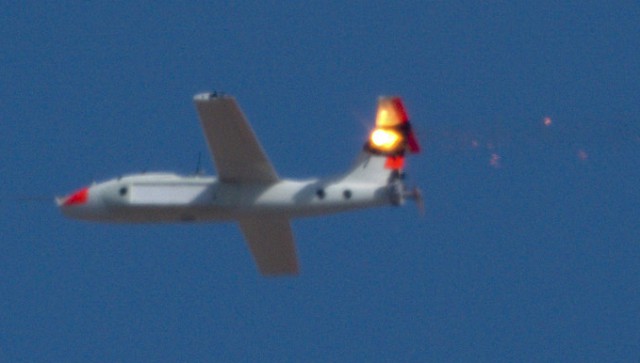A Lockheed Martin prototype laser weapon system proved that an advanced system of sensors, software and specialized optics can deliver decisive lethality against unmanned aerial vehicle threats.
In tests conducted with the U.S. Army’s Space and Missile Defense Command in August, the 30-kilowatt class ATHENA (Advanced Test High Energy Asset) system brought down five 10.8′ wingspan Outlaw unmanned aerial systems at the Army’s White Sands Missile Range in New Mexico. ATHENA employed advanced beam control technology and an efficient fiber laser in this latest series of tests of the prototype system.
“The tests at White Sands against aerial targets validated our lethality models and replicated the results we’ve seen against static targets at our own test range,” said Keoki Jackson, Lockheed Martin’s Chief Technology Officer. “As we mature the technology behind laser weapon systems, we’re making the entire system more effective and moving closer to a laser weapon that will provide greater protection to our warfighters by taking on more sophisticated threats from a longer range.”
Lockheed Martin partnered with Army Space and Missile Defense Command on a cooperative research and development agreement to test ATHENA.
The system defeated airborne targets in flight by causing loss of control and structural failure. Lockheed Martin and the Army will conduct post mission reviews, and data collected will be used to further refine the system, improve model predictions and inform development of future laser systems.
ATHENA is a transportable, ground-based system that serves as a low-cost test bed for demonstrating technologies required for military use of laser weapon systems. Lockheed Martin funded ATHENA’s development with research and development investments. It uses the company’s 30-kilowatt Accelerated Laser Demonstration Initiative (ALADIN) that provides great efficiency and lethality in a design that scales to higher power levels. ATHENA is powered by a compact Rolls-Royce turbo generator.
Lockheed Martin is positioning laser weapon systems for success on the battlefield because of their speed, flexibility, precision and low cost per engagement.
Source: Press Release

